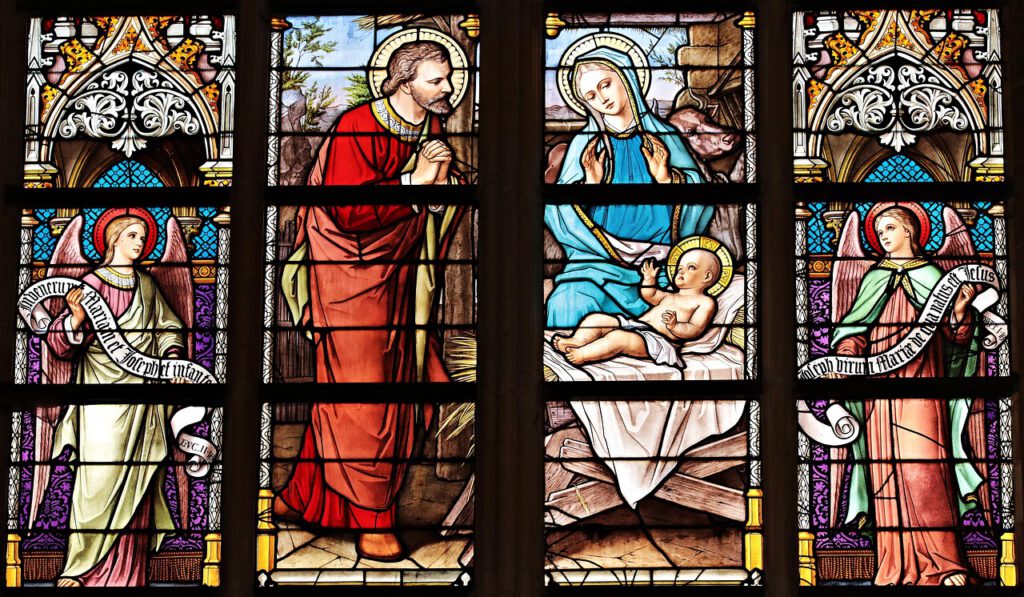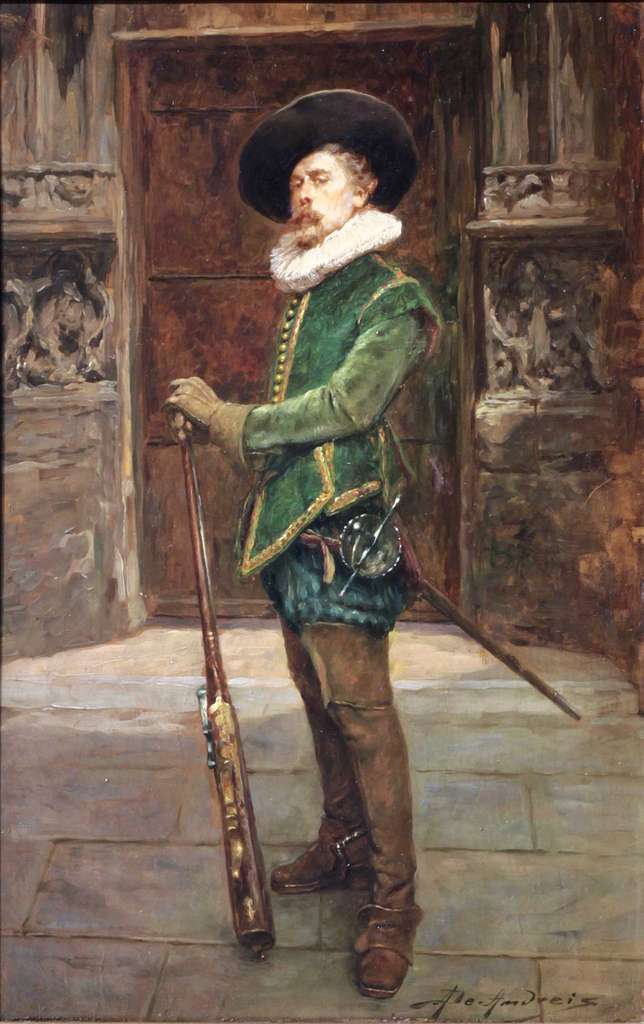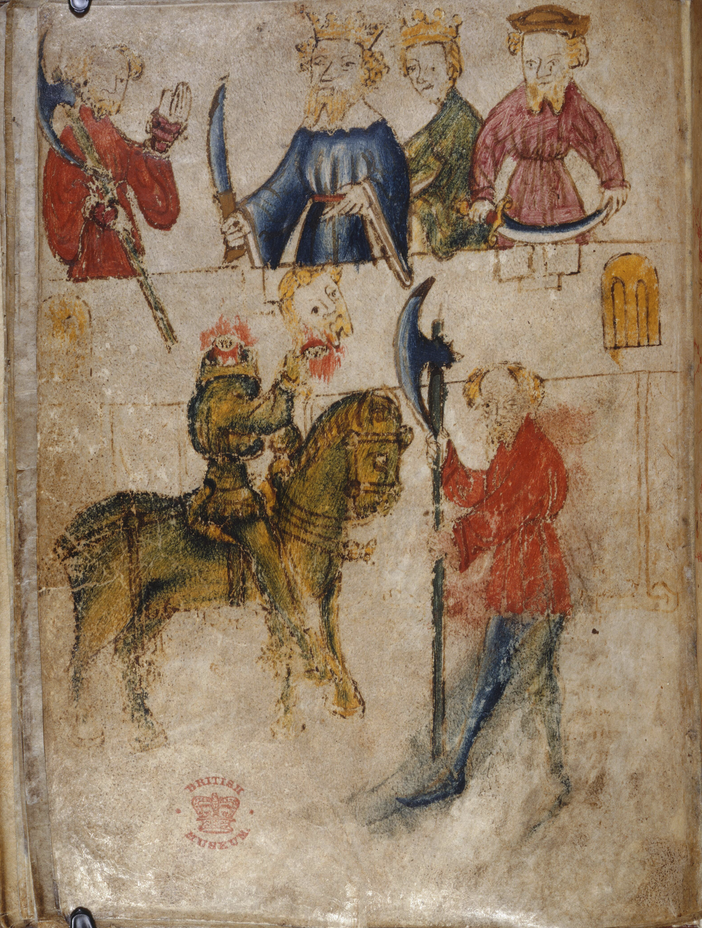Approaching Canonicity through a Digital Inventory of Exempla: A Response to William E. Engel
Grant Williams
Published in Connotations Vol. 34 (2025)
Abstract
My response offers an alternative to Engel’s metacognitive view by exploring how the rhetorical device of the exemplum illuminates the problem of canonicity. The pitfall of canonicity is, simply put, the exclusion of marginalized voices from a literary collection. When Engel, Loughnane, and I selected the passages for our anthology The Death Arts in Renaissance England, our fear of this pitfall did not arise from expecting ideological lapses, but from the limitations of the inductive method, that which scholars, to some degree or another, strive to implement when selecting texts. I argue that one can avoid such fear of leaving someone out by conducting an inductive inquiry through what I call a “digital inventory.” My reflections are based upon my current death-art project that collects from the EEBO-TCP the exempla of Herostratus, a premodern antecedent of cancel culture. Because a digital inventory transparently sets the parameters around one’s own canon, it can provide visible justification for the contingency and provisionality of one’s selection of texts. It is also a heuristic tool for delving into the EEBO-TCP, neither bound to the traditional canon’s terms of “author” and “work” nor restricted to the notion of the representative—either the popular or the famous.
[→ page 276] In attempting to represent the early modern death arts in a series of excerpts from printed works published between 1500 and 1700, our editorial team expressed misgivings about compiling an anthology that could be perceived as ossifying a closed canon. The culture wars of the 1980s taught us to distrust canon formation on the grounds that any act of establishing a recommended list of readings risks the charge of obscuring and even marginalizing less represented groups and interests, particularly with respect to gender, sex, race, and class. To mitigate the problem of canonicity, our team adopted, as my co-editor Bill Engel recounts, a metacognitive approach whereby our introduction reflected upon the early modern print record’s biases and the anthology’s compositional process, emphasizing our provisional and preliminary efforts in an ongoing research program.
Bill Engel’s germane thoughts about the scholarly anxieties around anthologizing texts has stirred me to reflect further upon canonicity and its inherent limitations. For us, the danger of misrepresenting cultural diversity never stemmed, at least consciously, from a desire to ideologically homogenize the period’s death arts. It arose in large part from the challenge of carrying out an inductive method. My response to Engel’s case study thus takes a methodological angle to canon formation, supplementing his insightful comments upon the metacognitive approach. I argue for the heuristic efficacy of a digital inventory, that is, textual selection based upon a thorough inductive inquiry into the early modern digital corpus. A scholar need not be a cutting-edge digital humanist to reap the benefits of thinking with and through such an inventory. My reflections take advantage of my latest death-art project, which examines what the story of Herostratus tells us about one significant way in which early modern English books rhetorically enacted commemoration—or, in Peter Marshall’s lucid phrase, “post-mortem fame” (276). Herostratus, a classical antecedent of cancelling, had his name prohibited from ever being uttered again after he sought out eternal fame by burning down the Ephesian Temple of Diana. [→ page 277] Whereas Bill Engel examined the implications of the anthology for canonicity, I will tease out some of the ramifications of the exemplum, another genre engaged with excerpting books.
Working on the death arts anthology reminded me that we do not inhabit a post-canonical world, contrary to what Peter Robinson has suggested (1). All acts of scholarly endeavor and critical investment, in my way of thinking, presuppose a canon, whether or not we choose to recognize it. Canonicity is thus an unavoidable precondition of researching and teaching in the humanities. But that does not mean a proposed list of texts constitutes a monolithically prescriptive closed system in which a judge has for once and for all ruled on what should be included and excluded. A canon, outside of religious contexts, never purports to being complete. As the work of Wendell V. Harris has admirably demonstrated, canons, even those traditionally conceived, are not concerned with imposing authority and enforcing hegemony but with making a selection along with the reasons behind that selection. And just as there are many different sets of criteria for selecting and not selecting texts, there are numerous canons actual and potential, each established for the purpose of representing something, whether a period, society, group, or theme. We expose ourselves to justifiable criticism of political and ideological uniformity when we fail to present reasons for our selection—when we naturalize our decision-making as though we were the self-appointed adjudicators of universal values in our culturally heterogeneous world. Scholars can no longer assume an unquestioned pantheon of classic works “symbolized” by the ten editions and many reprints of the Norton Anthology of English Literature, Major Authors Edition, which, by the way, dropped the subtitle after 2018. One’s selection of texts demands an argument and just as significantly evidence for that argument.
That is why self-reflection, even of the metacognitive kind, can go only so far in allaying self-doubts over selected excerpts. Although our editorial team considered amongst ourselves several hundred passages and texts and generated from these four main categories or headings (Preparatory and Dying Arts, Funereal and Commemorative Arts, [→ page 278] Knowing and Understanding Death, and Death Arts in Literature), we hardly read the entire archive—were that ever possible—in coming up with our final selections (see Engel, Loughnane, and Williams 44). I for one feared gaps in coverage, for example, missing an exemplary work by a little-known writer, overlooking a series of texts that might have problematized how effectively the four headings represented the period, and misproportioning the groupings toward certain arts, such as commemoration, without accounting for others. The fear of not realizing adequately enough our purpose of choosing texts that represent the period’s death arts arose less from ideological insensitivity than from the limitations of the inductive method, what we and most scholars strive to practice when compiling a canon. (My assumption is that scholars proceed through a dialectic between deduction and induction, whereby they use critical sources to obtain general guidance, which they eventually modify and expand with their own exploratory forays into the archive.) Induction never delivers bullet-proof certainty, because in moving from specific observations to general principles we can always defer our conclusion until we conduct more observations, collect more evidence. Most assuredly, it is an asymptotic exercise in which one can never state without a doubt whether or not important material has been left out of the inferential reasoning process.
And yet, despite the inherent problem with the inductive method, the digital age enables scholarship to obtain a degree of rigor and thoroughness not available to earlier scholars who had to rely solely on the analogue resources of large research libraries. We should support our argument for selecting a canon with as much evidence as possible. Should we not? Now that a substantial portion of the English archive (1475-1700) is machine-readable, we can delimit the parameters of a specific corpus of texts, out of which a canon may be drawn. As Katherine Bode helpfully elucidates, there are three major areas that should be kept distinct: “‘the published’ (all literary works in history), ‘the archive’ (the portion of what was published that has been preserved and is now increasingly digitized), and ‘the corpus’ (the segment of the archive selected for a particular research question)” (83). The EEBO-TCP [→ page 279] (the Early English Books Online and the Text Creation Partnership) has produced approximately 60,000 fully-searchable, SGML/XML-encoded texts from the 125,000 digitized images of microfilmed works (see EEBO). By conscientiously working with the EEBO-TCP corpus, scholars can lend precision to their claims of representing some aspect of the early modern period and in their searches, or, rather, inductive inquiries, can define the specific data set from which they select the “representative” texts for their anthologies and other publications. Indeed, large-scale digital humanities projects, such as those by Alan B. Farmer and Zachary Lesser and by Mikko Tolonen et al., have qualitatively and quantitively analyzed large archival swathes of the early modern digital corpus the relative popularity of early modern books. As important and exciting as these projects are, there is not—as I have been contending—one single macro, mega, or meta canon “to rule them all,” so to speak. And thus to take advantage of the early modern digital corpus for establishing, studying, and teaching smaller, targeted canons, one need not be an expert in big-data analytics or have a mammoth project that manages a team of computer scientists.
By way of a case study from my latest work, I set out to compile what I call, for lack of a better phrase, a “digital inventory.” My inventory addresses the question of how early modern book history manifests the cancelling of Herostratus. Of course, Herostratus’s story still arrives in the Renaissance, having been passed down from classical authors, some of whom, like Valerius Maximus (8.14.ext. 5), recount his deed and punishment but omit his name, while others, like Strabo (14.1.22), also mention his name. I searched for all appearances of his distinctive name in the EEBO-TCP corpus—a task slightly complicated by the fact that Herostratus also went by “Erostratus” and its variants in England as well as Europe (Borowitz x). With the data, I wanted to ascertain the extent to which early modern English books gave him the fame he sought for. The inductive inquiry yielded no matches from the members of what Alastair Fowler terms the “Official Canon,” that is, the literature “institutionalized through education, patronage, and journalism” (98): in the poetry and/or plays of Sidney, Spenser, Marlowe, [→ page 280] Shakespeare, Donne, and Milton—as well as searches in their print concordances—the name of Herostratus does not appear at all; the biggest exception in prose is Thomas Browne’s Urn Burial (75). Nevertheless, I found 318 matches in 295 separate works from a wide range of subject categories, predominantly in “Politics and History” and “Religion.” (For my calculations, I counted only one digitized issue or edition of each work.) The six categories with which I tagged the books with Herostratus’ name are the ones Farmer and Lesser use in their essay on the Short Title Catalogue: Religion, Politics and History, Science and Mathematics, School and Language Instruction, Poesy and the Arts, and Society and Conduct (28-29). “Politics and History” and “Religion” together account for two thirds of the matches and the next four categories account for the rest.
The inventory, a heuristic for inductive inquiry, enabled me to discover a significant rhetorical pattern: 75% of the matches appear in an exemplum, whereas 25% leave out the story, functioning at best as an allusion. The exemplum—or example (paradigma)—is basically a device that illustrates a point by means of a brief narrative, and, since ancient times, was, along with the enthymeme, a fundamental type of argument in an orator’s arsenal for persuading an audience on the grounds of probability (Lyons 8). This device underwent a revitalization under Renaissance humanism, which deployed it extensively to teach virtue ethics and ultimately held it up as a vehicle for commemoration and fame. Humanist education—I argue at length in my essay, “The Exemplum, Posterity, and Dramatic Irony in Antony and Cleopatra”—incentivized the reading of history for the cultivation of virtue on the basis that exempla could preserve a person’s name more lasting than any physical monument could (87-89). The discovery that Herostratus was recruited as an exemplum in early modern books led me to consider the question of whether or not there were other English exempla, which following Valerius Maximus, omitted Herostratus’ name altogether. A second inductive inquiry, much harder to conduct because of the need to sift out irrelevant material, revealed over hundred such exempla. My parameters of this subsequent searching emphasized [→ page 281] what I have deemed to be the core event of the exemplum: the combination of “burning” with the “temple,” identified as either “Ephesus” or “Diana.” Obviously, such arduous searching could never render the certainty a name search could. The examples of my second inventory were proportionately distributed through the same subject categories as those of the first inventory, namely, through “Politics and History” and “Religion.” It appears that, since many books comparable to the ones that mentioned “Herostratus” have omitted his name, their authors, one can infer, appear to side with the Ephesian prohibition of damnatio memoriae. Does the context furnished by the second inventory then suggest that the writers in the first are actually complicit with Herostratus by giving him the fame he craved for? Close to 60% of the total of writers seem to memorialize him through his wicked deed or, at the very least, express indifference toward the ethical import of commemoration. Further investigation into the first inventory, however, demonstrates that this is not the case at all. Early modern books operate within a humanist discourse of infamy that exploits the inclusion of the name to remember the ignominious—not for the sake of commemoration but for the sake of debasement and defamation.
My digital inventory minimizes the scholar’s fear of misrepresenting the period or leaving out marginal voices. It sets definitive parameters within which researchers can confidently work. An inventory drawn from the early modern corpus will, of course, always provide incomplete data insofar as the archive, once fully digitized, still won’t correspond to what was published during the period (see Bode 83). Nonetheless, an inventory maximizes the accessible extant resources at a given moment in scholarly production so that text-selection as much as possible does not obfuscate its own partiality. For example, no female writers in print—with the exception of the seventeenth-century woman Elizabeth Cellier (6)—mention Herostratus, and if I were to create a canon of his exempla, I could proceed without fearing I missed an important voice. With respect to class stigma, Herostratus is, strangely enough, referred to as a shoemaker in a few sources, most notably by [→ page 282] Thomas Deloney in Jack of Newbury, where the character Cardinal Wolsey insults the admirable Jack in front of the King by comparing him to “Herostratus the Shoomaker, that burned the Temple of Diana, onely to get himself a name” (Fr-v). The ascription of this trade to the arsonist is, by the way, not historically correct: Deloney may have made the mistake from misreading a passage of The French Academie (Ii4r), in which La Primaudaye recounts the exemplum while explaining how even common people like a tailor or shoemaker desire their names to be immortalized with physical memorials. Whatever the case, Deloney flags this particular exemplum as a cynical tactic of denying non-gentlemen recognition for their social achievement.
Notwithstanding their defined parameters, digital inventories do not presuppose a static state of affairs. When selecting extracts for the death arts anthology, we had qualms of appearing to champion a fixed list of authors and works. But because inductive inquiries are theoretically open-ended, digital inventories encourage us to accept and implement the productive provisionality and fluidity of research projects—a position, as mentioned, we arrived at in our thinking about the critical anthology: canons are always subject to further change, refinement, and qualification as new questions and new information emerge. That is how the process unfolded with my project on Herostratus. My investigation started off with an inventory on his name, which led me to look into the additional parameter of the “exemplum.” This second inventory directed me, in turn, to search for exempla that omitted his name, furnishing me with the scaffolding for locating numerous texts that actually, rather remarkably, could be said to cancel Herostratus. One can thus build upon the scaffolding of earlier digital inventories. The work that I have done naturally feeds into bigger projects, which may involve other famous and infamous exemplary figures, such as Alexander the Great, Julius Caesar, and Mark Antony. As large scale digital projects come online, scholars can profit from their fields and tagging to improve and develop inventories with refined or alternatively defined parameters. For example, Alexa Zildjian’s database of dedications that [→ page 283] draw upon 98,263 British books between 1641 until 1700 will make possible answers to questions about the strategic use of exempla in book history. Herostratus, I found, serves at times as an admonitory device in this particular paratext, known for its promotion of the exemplarity of patrons—as Michael Ullyot has recently explored in “dedicatory epistles for Essex and Henry, from 1577 to 1612” (19).
I do not mean to suggest that generating a digital inventory would have necessarily improved our death arts anthology at this point in time. For a research area as large as the death arts establishing a single corpus poses serious challenges; the parameters of our anthology’s excerpts span various subjects and genres. More significantly, the anthology rallied around an enabling yet nebulous conceptual amalgam—circumscribing at once an assemblage of practices or techniques and a complex family of ideas. No doubt multiple interrelated inventories would be required to cover the terrain, and even then the conceptual amalgam of the “death arts,” unlike a linguistic datum such as a simple proper name, evokes many cognate terms and phrases. So much of the inductive inquiry into the EEBO-TCP requires putting in place an accepted meta-language and applying that language systematically to the entire corpus.
Despite such long-term challenges, my project on Herostratus has taught me that the inductively oriented digital inventory is an effective heuristic tool for disclosing alternative ways of thinking about canonicity and text-selection. The belletristic categories of “author” and “title” need not be hallowed premises or anchor points of text-selection when it comes to representing the period. These anchor points belong more to the “official” vernacular literary canon, which really only “blossomed” in the eighteenth century anyway (Harris 113). The field of the USTC subject classification in the metadata of EEBO-TCP should, instead, guide our inquiries when we compile new digital inventories. Unfortunately, the current state of categorization leaves something to be desired for scholars who look twice at the labels for any given titles, since books we all know inevitably occupy different categories (Farmer and Lesser 29), while the USTC subject categories do not misjudge [→ page 284] works infrequently. But with the development of AI technologies, the future no doubt holds out the promise of allocating more precise and consistent descriptors. Until this problem is entirely eliminated, scholars with their manageable digital inventories can recategorize subjects and genres or create their own relevant meta-data for analyzing texts.
Inventories, in effect, dissolve the rigid boundaries of the magisterial work, by allowing the scrutiny of patterns across paratexts, sayings, rhetorical figures, and other divisions. As the rich practices of collecting, managing, and modifying commonplaces attest (see Victoria E. Burke 153-77), the Renaissance did not consume and produce books only to enjoy a wholistic aesthetic experience of reading but to capture meaningful and pragmatic fragments that could be recycled by others through the compositional strategies of imitatio, amplification, and copia. The gathering and framing of extracts from classical literature into commonplace books, Mary Thomas Crane argues, shaped and controlled individual subjects and indeed “most forms of literary and political discourse in sixteenth-century England” (4). English readers searched specifically for exempla—to collect, remember, and repurpose them in their own writing. During the period the commonplace book, by the way, offers a historical antecedent of the micro-canon that I am arguing for insofar as it also derives from selecting texts on the basis of criteria, that is, according to particular predetermined subject headings.
By focusing on a single exemplum, my inventory registers the ways in which many little-known writers from different quarters use and abuse this story about Herostratus for different rhetorical, ethical, and political purposes. The anchor field of an “exemplum” opens up connections outside the typical canonical anchors of “author” and “title,” which often assume literary history to be a great dialogue between great artists. A relatively small percentage of the inventory’s examples falls within the subject category of literature, and overall the examples are located throughout a range of subjects (including travel, medicine, and cosmology) and all sorts of formats, from ephemera to folios. What is also surprising, given Peter Burke’s emphasis upon the secularity of Renaissance exempla (54), is that religious writers marshal Herostratus’ exemplum [→ page 285] to elucidate the difference between fame and infamy, especially within commentary on the building of the Tower of Babel (Holden 2) and Judas’s betrayal of Christ (Ward 363). This awareness of Herostratus’ exceptional ignominy and vainglory helps to explain why throughout the period many religious controversialists and political pamphleteers weaponize his name to defame their opponents. In the earliest mention of Herostratus in English, the Reformer John Bale compares Edmund Bonner, the notorious Catholic bishop of London, to the vain-glorious arsonist (L7r), and many controversialists will simply call their enemies or traitors a “Herostratus.” My specific inventory highlights print culture’s investment in spreading infamy, countering the assumption—as with the large-scale work of Lesser and Farmer and Tolonen—that word- and text-frequency betoken fame or popularity. Print recalls the notorious for the purposes of defamation and counter-intuitively encourages readers to forget them and their crimes. That is, the period’s books did not just enshrine paragons for the sake of posterity—a traditionally canonical move to say the least—but also materialized a grey zone for the ignominious, actively pushing them to the edge of oblivion.
Historical research into the early modern corpus goes beyond verifying the representative and exemplary texts of a culture: what a culture apparently wants to remember and reproduce. An illuminating outcome of the digital inventory’s inductive method is the canonical exception: what a culture forgets. A digital inventory can thus help scholars retrieve the non-representative, the obscure within the early modern corpus. In a response to Michael Gavin, who celebrates abstract data analysis and the death of the document heralded by digital technology (10), Peter C. Herman articulates the benefits he has received by “the movement from print to catalogue to microfilm to EEBO and now to EEBO-TCP” (208). The corpus “has allowed for greater and greater concreteness and historical specificity,” providing Herman with “a finer grained understanding of the past” (208, 214). Despite agreeing with Herman’s recuperation of the EEBO-TCP for elucidating history, [→ page 286] I hesitate to isolate the specific from the general, especially of the historical kind. It is only with a clear understanding of the abstract forces and dominant patterns shaping a corpus that we can seek for and appreciate the significance of obscure exceptions. In revealing representative texts, digital inventories go far in identifying the non-representative. As I have stated, my digital inventory of works that mention “Herostratus” has just one female writer. Against this background, the achievement of Hester Pulter, the seventeenth-century poet, becomes even more significant because of its anomalous status: her wonderful recently discovered manuscript presents the only early modern English poem I know of devoted to Herostratus (“Vain Herostratus”). Where did she come across this exemplum, and what does she mean by turning it into a poem? How does gender inform her enshrinement of male infamy, for as that inveterate exemplum-collector Richard Brathwaite notes, “None ever of their Sex committed so foule a crime, as to burne Diana’s Temple, and that was done by the masculine spirit of an Herostratus” (41-42)?
My widening of canonicity to any kind of representative text selection may seem for some too relativistic. But that’s my point. Text selection occurs all the time and at all stages of research and in all projects big and small. It manifests itself overwhelmingly in early modern writing, where compositions were created out of selecting and managing exempla—as well as many other types of textual fragments. No longer do scholars need to fear accusations of ideological distortion and politically motivated exclusion when they can make the effort to conduct an inductive inquiry within existing digital resources. The digital inventory can transparently set the parameters around one’s own canon formation, providing more precise evidence for the contingency of their text selection. Furthermore, the digital inventory is a heuristic tool for delving into the EEBO-TCP, escaping the comfort zone of remaining bound to the official canon. It need not be restricted, either, to equating the culturally or historically significant with the notion of the representative, either the popular or the famous. As I have argued by means [→ page 287] of my recent project on Herostratus, the non-representative—the infamous, the almost forgotten, and the rare—can be a source of text selection for illuminating the conditions of early modern rhetoric, book production, and print culture.
Works Cited
Bale, John. Yet a course at the Romyshe foxe. Antwerp, 1543.
Bode, Katherine. “The Equivalence of ‘Close’ and ‘Distant’ Reading; or, Toward a New Object for Data-Rich Literary History.” Modern Language Quarterly 78.1 (2017): 77-106.
Borowitz, Albert. Terrorism for Self-Glorification: The Herostratos Syndrome. Kent, OH: Kent State UP, 2005.
Brathwaite, Richard. Ar’t asleepe husband? A boulster lecture. London, 1640.
Browne, Thomas. Hydriotaphia, urne-buriall, or, a discourse of the sepulchrall urnes lately found in Norfolk. London, 1658.
Burke, Peter. “Exemplarity and Anti-Exemplarity in Early Modern Europe.” The Western Time of Ancient History. Ed. Alexandra Lianeri. Cambridge: CUP, 2011. 48-59.
Burke, Victoria E. “Recent Studies in Commonplace Books.” English Literary Renaissance 43.1 (2013): 153-77.
Cellier, Elizabeth. To Dr. —— an answer to his queries concerning the Colledg of Midwives. London: 1688.
Crane, Mary Thomas. Framing Authority: Sayings, Self, and Society in Sixteenth-Century England. Princeton, NJ: Princeton UP, 1993.
Deloney, Thomas. The pleasant historie of Iohn VVinchcomb in his yonguer [sic] yeares called Iack of Newbery. London, 1626.
“Early English Books Online (EEBO) TCP.” Text Creation Partnership. https://textcreationpartnership.org/tcp-texts/eebo-tcp-early-english-books-online/. 1 Oct. 2025.
Engel, William E., Rory Loughnane, and Grant Williams, eds. Introduction. The Death Arts in Renaissance England: A Critical Anthology. Cambridge: CUP, 2022. 1-48.
Farmer, Alan B., and Zachary Lesser. “What Is Print Popularity? A Map of the Elizabethan Book Trade.” The Elizabethan Top Ten: Defining Print Popularity in Early Modern England. Ed. Andy Kesson and Emma Smith. Farnham: Ashgate, 2013. 19-54.
Fowler, Alastair. “Genre and the Literary Canon.” New Literary History 11.1 (1979): 97-119.
Gavin, Michael. “How to Think About EEBO.” Textual Cultures 11.1-2 (2019): 70-105.
Harris, Wendell V. “Canonicity.” PMLA 106.1 (1991): 110-21.
Herman, Peter C. “EEBO and Me: An Autobiographical Response to Michael Gavin, ‘How to Think About EEBO.’” Textual Cultures 13.1 (2020): 207-16.
Holden, Samuel. Two Sermons preach’d at the funerals of the Right Honourable Robert Lord Lexinton and Lady Mary his wife. London, 1676.
La Primaudaye, Pierre de. The French Academie. London, 1594.
Lyons, John D. Exemplum: The Rhetoric of Example in Early Modern France and Italy. Princeton, NJ: Princeton UP, 1989.
Marshall, Peter. Beliefs and the Dead in Reformation England. Oxford: OUP, 2002.
The Norton Anthology of English Literature: Major Authors Edition. Ed. M. H. Abrams et al. New York: Norton, 1962.
Pulter, Hester. “Vain Herostratus” (Emblem 28, Amplified Edition). Ed. Matthew Harrison. The Pulter Project: Poet in the Making. Ed. Leah Knight and Wendy Wall. https://pulterproject.northwestern.edu/poems/ae/vain-herostratus-emblem-28/. 1 Oct. 2025.
Robinson, Peter. Introduction. Textual Scholarship and the Canon. Ed. Hans Walter Gabler, Peter Robinson, and Paulius Subačius. Amsterdam: Rodopi, 2008.
Strabo. Geography. Trans. Horace Leonard Jones. Cambridge, MA: Harvard UP. Vol. 6: Books 13-14. 8 vols. 1917-1932. Loeb Classical Library.
Tolonen, Mikko et al. “Examining the Early Modern Canon: The English Short Title Catalogue and Large-Scale Patterns of Cultural Production.” Data Visualization in Enlightenment Literature and Culture. Ed. Ileana Baird. Cham: Springer, 2021. 63-119.
Ullyot, Michael. The Rhetoric of Exemplarity in Early Modern England. Oxford: OUP, 2022.
Valerius Maximus. Memorable Doings and Sayings. Trans. D. R. Shackleton Bailey. Cambridge, MA: Harvard UP, 2000. Vol. 2: Books 6-9. 2 vols. 2000. Loeb Classical Library.
Ward, Richard. Theologicall questions, dogmaticall observations, and evangelicall essays. London, 1640.
Williams, Grant. “The Exemplum, Posterity, and Dramatic Irony in Antony and Cleopatra.” The Shakespearean Death Arts: Hamlet Among the Tombs. Ed. William E. Engel and Grant Williams. Cham: Springer International Publishing, 2022. 85-111.
Zildjian, Alexa. “‘Made one in al good thinges’: Early Modern English Book Dedications to Married Couples.” Renaissance Society of America. Chicago, IL. 22 March 2024.













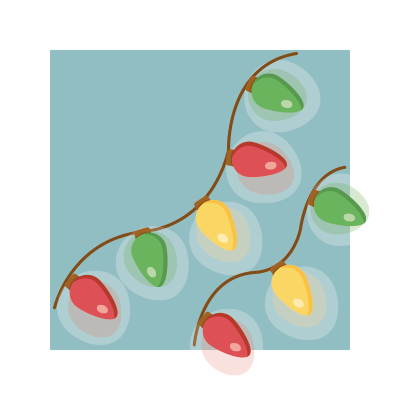













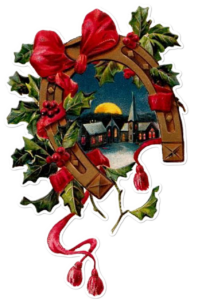

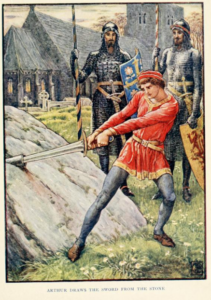


 Ring out, wild bells, to the wild sky,
Ring out, wild bells, to the wild sky,